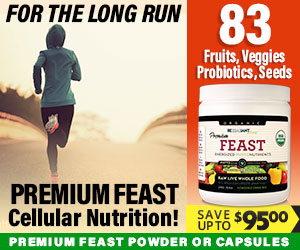- 1. Berries: Natureâs Tiny Powerhouses
- 2. Dark Green Leafy Greens for Maximum Protection
- 3. Nuts and Seeds: Small but Mighty
- 4. Colorful Vegetables and Phytochemicals
- 5. Herbs and Spices Rich in Antioxidants
- 6. Fruit Extracts and Concentrates
- 7. Whole Grains and Their Antioxidant Benefits
- 8. Legumes for Antioxidant Defense
- 9. Wild-Caught Seafood and Natural Antioxidants
- 10. Fermented Whole Foods for Gut & Antioxidant Health
1. Berries: Natureâs Tiny Powerhouses
Rich in Anthocyanins and Flavonoids
Berries like blueberries, strawberries, and blackberries are packed with potent antioxidants called anthocyanins and flavonoids. These compounds give berries their vibrant colors and offer significant health benefits, especially in reducing oxidative stress. In 2025, research continues to show that regularly consuming berries may lower the risk of chronic diseases including heart disease and certain cancers.
Anthocyanins are celebrated for their anti-inflammatory and anti-cancer properties. They help neutralize harmful free radicals in the body, supporting overall cellular health. Incorporating a variety of colorful berries into your dietâsuch as in smoothies, oatmeal, or as snacksâensures you get a diverse range of these powerful antioxidants.
Furthermore, berries are versatile and accessible year-round, making them a practical choice for boosting your antioxidant intake daily. Aim for at least a cup of mixed berries each day to maximize their benefits and protect your bodyâs cells from oxidative damage.
2. Dark Green Leafy Greens for Maximum Protection
Chlorophyll and Carotenoids as Antioxidants
Dark leafy greens like kale, spinach, and Swiss chard are nutritional powerhouses rich in chlorophyll, lutein, and beta-carotene. These antioxidants play a crucial role in neutralizing free radicals, which can damage cells and accelerate aging. For 2025, the emphasis on plant-based diets underscores the importance of leafy greens for antioxidant intake.
Chlorophyll, in particular, has been studied for its detoxifying properties and ability to support immune function. Meanwhile, carotenoids like lutein and zeaxanthin protect eye health and reduce inflammation. To harness these benefits, incorporate leafy greens into salads, smoothies, or sautés several times a week.
Consuming a diversity of greens gives you a broad spectrum of antioxidants. Consider organic options and aim for at least 2-3 servings daily as part of a balanced diet to optimize cellular health and antioxidant protection.
3. Nuts and Seeds: Small but Mighty
Vitamin E and Selenium in Nuts & Seeds
Nuts and seeds such as almonds, walnuts, chia seeds, and flaxseeds are exceptional sources of vitamin E, selenium, and other antioxidants. These nutrients help protect cell membranes from oxidative damage, supporting long-term health and anti-aging efforts. In 2025, they remain a staple in health-conscious diets worldwide.
For instance, walnuts contain polyphenols and omega-3 fatty acids that boost antioxidant capacity. Chia seeds provide lignans, which have been linked to reduced inflammation and oxidative stress. Snacking on a handful of mixed nuts or adding seeds to your meals can significantly enhance your antioxidant defenses.
To maximize benefits, choose raw or minimally processed options, and incorporate these as toppings or ingredients in your favorite recipes. Regular consumption of nuts and seeds is a simple, effective way to elevate your whole food antioxidants intake daily.
4. Colorful Vegetables and Phytochemicals
The Role of Carotenoids and Glucosinolates
Colorful vegetablesâcarrots, bell peppers, beets, and tomatoesâare rich in carotenoids, while cruciferous vegetables like broccoli and cauliflower contain glucosinolates. These phytochemicals have powerful antioxidant properties that support detoxification and reduce oxidative stress.
For example, lycopene in tomatoes is linked to lower prostate cancer risk, while beta-carotene in carrots promotes healthy skin and vision. Including a rainbow of vegetables each day ensures your body benefits from a diverse array of whole food antioxidants.
Eating vegetables in various formsâraw, steamed, roastedâhelps retain their phytochemicals. Aim for at least 3-4 servings of colorful vegetables daily for vibrant health benefits.
5. Herbs and Spices Rich in Antioxidants
Turmeric, Cinnamon, and Cloves as Natural Boosters
Herbs and spices like turmeric, cinnamon, cloves, and ginger are concentrated sources of antioxidants, including curcumin and polyphenols. These ingredients are not only flavorful but also boost your body’s ability to fight oxidative damageâmaking them essential in a 2025 health-conscious kitchen.
Turmericâs curcumin has been extensively studied for its anti-inflammatory effects, while cinnamon can help regulate blood sugar and reduce oxidative stress. Cloves possess high levels of phenolic compounds, making them one of the most antioxidant-rich spices.
Adding herbs and spices to your meals can be a simple, flavorful way to enhance overall antioxidant intake. Use turmeric in curries, cinnamon in oatmeal, and cloves in baked goods to benefit from their potent phytochemicals.
6. Fruit Extracts and Concentrates
High-Polyphenol Supplements and Juices
In 2025, fruit extracts like pomegranate, cranberry, and acai are popular supplements and juices due to their high antioxidant content. These concentrated forms provide a potent dose of polyphenols, anthocyanins, and flavonoids that support immune health and cellular protection.
Using natural fruit extracts in smoothies or as salad dressings can be an effective strategy for boosting antioxidants without adding excess sugar. Always opt for products that are minimally processed and free of added preservatives.
Incorporating whole fruit extracts into your diet can help meet the increased antioxidant needs of modern lifestyles, particularly as pollution and stress levels rise. These concentrated options are a smart addition to a balanced regimen for 2025 health optimization.
Get an Amazing Discount on the Best Certified Organic Whole Food Supplement!
7. Whole Grains and Their Antioxidant Benefits
Quinoa, Brown Rice, and Oats
Whole grains like quinoa, brown rice, and oats are not only rich in fiber but also contain antioxidants such as phenolic acids and flavonoids. These compounds help combat oxidative stress and support cardiovascular health.
Recent studies in 2025 reinforce the importance of whole grains for balanced diets, emphasizing their role in maintaining metabolic stability and reducing inflammation. Making whole grains a daily staple can significantly increase your intake of natural antioxidants.
Start your day with oats or swap refined grains for whole options during meals. A varied diet with different whole grains provides a broad spectrum of antioxidant compounds that benefit your entire body.
8. Legumes for Antioxidant Defense
Lentils, Chickpeas, and Beans
Legumesâlentils, chickpeas, and various beansâare nutrient-dense foods offering abundant antioxidants like polyphenols and flavonoids. They support gut health and reduce oxidative damage throughout the body.
Research in 2025 shows that regular legume consumption can lower inflammation markers and improve overall health outcomes. Their versatility makes them a convenient choice for soups, salads, and stews.
For optimal benefits, include legumes in your meals several times per week. Soaking and cooking properly maximizes their nutrient availability and antioxidant potential.
9. Wild-Caught Seafood and Natural Antioxidants
Omega-3 Fatty Acids and Astaxanthin
Wild-caught salmon, mackerel, and sardines are excellent sources of omega-3 fatty acids, which have antioxidant properties that reduce inflammation and oxidative stress. Additionally, some seafood contains astaxanthin, a potent antioxidant carotenoid.
In 2025, seafood remains vital for a balanced antioxidant-enriched diet, particularly for supporting brain, heart, and eye health. Regular intake from sustainable sources is recommended to harness these benefits.
Incorporate seafood into your weekly meal plan, aiming for at least two servings, to optimize your antioxidant intake and overall health status.
10. Fermented Whole Foods for Gut & Antioxidant Health
Sauerkraut, Kimchi, and Yogurt
Fermented foods like sauerkraut, kimchi, and yogurt are rich in probiotics that support gut health and enhance the body’s antioxidant defenses. A healthy gut microbiome plays a crucial role in reducing systemic inflammation and oxidative stress.
In 2025, incorporating fermented foods into your diet is a popular strategy for improving overall wellness. Their natural fermentation process increases bioavailability of antioxidants and adds beneficial bacteria.
Add these foods to salads, sandwiches, or enjoy as snacks. Regular consumption can boost your immune system and help you combat oxidative damage more effectively.
Frequently Asked Questions (FAQs)
1. What are whole food antioxidants and why are they important in 2025?
Whole food antioxidants are naturally occurring compounds found in minimally processed foods like fruits, vegetables, nuts, and whole grains. They help neutralize harmful free radicals, reducing oxidative stress and preventing chronic disease. In 2025, increasing intake of whole food antioxidants is essential for maintaining optimal health in our fast-paced, toxin-filled environment.
2. How can I easily incorporate more whole food antioxidants into my diet?
Start by adding a variety of colorful fruits and vegetables to every meal, include nuts and seeds as snacks, and choose whole grains over refined grains. Spices and herbs can be added to enhance flavor and boost antioxidants. Planning meals ahead can also ensure consistent intake of these protective foods.
3. Are supplements necessary if I consume plenty of whole food antioxidants?
While supplements can provide concentrated doses, whole food antioxidants offer additional nutrients and fiber that supplements lack. The best approach is consuming a diverse diet rich in whole, minimally processed foods for holistic health benefits.
4. What are some top whole food antioxidants to look for in 2025?
Berries, dark leafy greens, nuts and seeds, colorful vegetables, herbs and spices, and fermented foods remain top choices. Staying updated on trends and including a broad spectrum of these foods in your diet maximizes antioxidant protection.
Conclusion
In 2025, understanding and incorporating the best whole food antioxidants into your daily routine is more important than ever. These natural, nutrient-dense foods help combat oxidative stress, support your immune system, and promote long-term health. By prioritizing a diet rich in diverse whole food antioxidants, you lay a strong foundation for vibrant health now and in the years to come.




